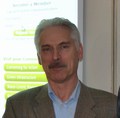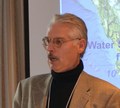ARTICLE: A pillar of Sustainable Watershed Systems, the Ecological Accounting Process has the potential to transform how communities make decisions about creekshed restoration (an op-ed published in the Vancouver Sun (June 2, 2018)

Hydrology is the engine that powers ecological services. Thus, integration of the Partnership for Water Sustainability’s work within the BC Framework should accelerate implementation of the whole-system, water balance approach at the heart of the Partnership’s ‘Sustainable Watershed Systems, through Asset Management’ program. “The Ecological Accounting Process, EAP, establishes what the definable benefits of ecological services derived from creekshed hydrology are, what they may be worth to stakeholders, and how they may be maintained and enhanced,” wrote Tim Pringle.







